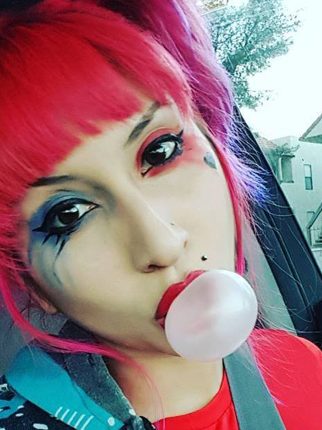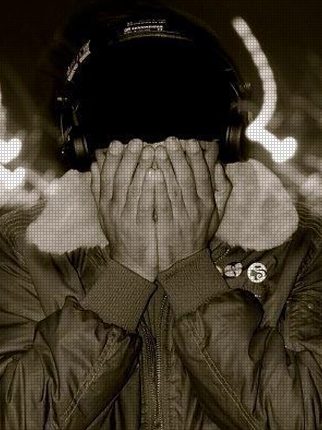My Life As: A Light Man
“I remember it so well: It was 1978; the club was Inferno on 18th and 6th. I went in there, and Kenny Carpenter was doing the lights. They had these beacons—think of a cherry-top on a cop car. The beacons dropped down to the dancefloor. Bam! I was so hooked, it was amazing. It really opened my head. Kenny Carpenter, who was also a DJ, was so in synch with the music. It was unbelievable.”

Ariel Figueroa—or Ariel, as he is known—talks in quick bursts. His is a passionate New York speech, smart, streetwise, at times hesitant and wary, and at others imperatively charismatic. Ariel has been the lighting man in NYC for some time now. I got a chance to catch up with him recently (usually when I see him, one or both of us is working) and hear his story of how he ended up being the man in the booth.
Okay so it’s day one on planet Ariel and…
As a kid, I always liked to tinker with things—you know, take stuff apart, see how it worked, combine things, build stuff with what I had laying around. I loved music, and when I started going out I was so impressed by the dancers, their look, how good their moves were. I mean, it’s NYC in the ‘70s and ‘80s—some serious business,” recalls Ariel. “I realized that I was kind of in awe at the theatrics of nightlife, the mix of the dancers, the music and the lighting, all these different cues, the fog and the smoke, how it all came together, the mood of the room.
How do you get the gig? It’s not like DJing, which you can do in your own home and then make mixes, get put on at a party.
I had been cutting hair and going out at night—Ipenima, Mars, 1018, all these clubs. The experience at Inferno made me feel like, I want to do this. It’s funny how fate works. I went to Tracks to meet Eddie Lopez. The day I went to see him, they had put an ad in the Village Voice looking for a lighting assistant. I just showed up hoping they could use me somehow; they thought I saw the ad and was a real go-getter. So I started to train there, learning wiring and design. Tracks had a great tech room; it was like a store. Eddy Lopez was trained in theater lighting, he was very sophisticated. He created these specific electric maps, for every spot in the ceiling, it was way way ahead of its time.
“I started to really feel inside the music, like I could shape the room and relate to the individual songs—but even more important, connect to the DJ’s specific style and approach.”

Larry Levan was playing there, right?
Larry and David DePino both were there. They had this great board, which had been designed for Disney, and it was electric as opposed to mechanical, which was really ahead of its time. I was learning how to program it and studying color—how certain mixes could have impact, while others would diffuse the energy. I started to be able to see and hear at the same time. Eventually, Larry gave me a shot and appreciated how I would anticipate changes in the song.

That’s a great compliment, because he was a very capable lighting man himself.
I know! He played “This Time Baby” by Jackie Moore, and he liked how I lit the different parts of the song—definitely a big moment for me.
You went from there to Sound Factory?
Yes, and working there with Junior Vasquez and Frankie Knuckles was intense. Junior would always have people like Janet Jackson and Grace Jones stopping by. I really bonded with Frankie, though. I loved doing the lights for him. When a song like “The Pressure” [by Sounds of Blackness] or “Deeper Love” [by C & C Music Factory] dropped, the room would be pitch black. I would have the smoke machine running, then drop the lights, a siren sound—man, the room would explode.
Then you segued over to Sound Factory Bar?
Yeah, and in many ways Sound Factory Bar was my favorite spot to light. I was working with Louie Vega there, but also Tee Scott, Tony Humphries, Shep Pettibone. I was also doing a disco night with Danny Krivit. Sound Factory bar was special for me. I started to really feel inside the music, like I could shape the room and relate to the individual songs—but even more important, connect to the DJ’s specific style and approach.
That’s the real craft of it, isn’t it? Developing an approach that enhances what the DJ is going for and also relates to the crowd.
Yes! You get in synch with the DJ. In a way, you are almost ahead of the music, and you help build this drama. The energy bounces between the people, the music, the lights; it moves you. Everything comes together. Oh, man.
Photos by Pearcey England
Ariel followed Sound Factory by going on to Vinyl, working with Louie and Danny Teneglia. He does the lights for a small party called Body & Soul and holds down Danny Krivit’s monthly 718 sessions party and Francois K’s weekly Deep Space soiree. I have been fortunate to have him do lights for me in both small and big rooms, and his thoughtfulness and attention are palpable. His lighting changes can be as subtle and dynamic as the music selected, and the impact of his gestures enhances the expectancy and vibrancy of the crowd. In addition to his lighting work, Ariel has developed a line of high fidelity lollipop headphones and has been venturing into music production—natural outgrowths for a New York icon who has made dance music his life’s work.






